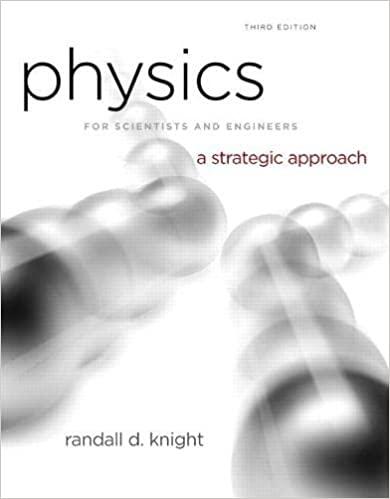Large objects have inertia and tend to keep movingNewtons first law. Life is very different for small
Question:
Large objects have inertia and tend to keep moving—Newton’s first law. Life is very different for small microorganisms that swim through water. For them, drag forces are so large that they instantly stop, without coasting, if they cease their swimming motion. To swim at constant speed, they must exert a constant propulsion force by rotating corkscrew-like flagella or beating hair-like cilia. The quadratic model of drag of Equation 6.16 fails for very small particles. Instead, a small object moving in a liquid experiences a linear drag force, D(vector) = (bv, direction opposite the motion), where b is a constant. For a sphere of radius R, the drag constant can be shown to be b = 6πμR, where h is the viscosity of the liquid. Water at 20°C has viscosity 1.0 × 10-3 N s/m2.
a. A paramecium is about 100 mm long. If it’s modeled as a sphere, how much propulsion force must it exert to swim at a typical speed of 1.0 mm/s? How about the propulsion force of a 2.0–μm– diameter E. coli bacterium swimming at 30 μm/s?
b. The propulsion forces are very small, but so are the organisms. To judge whether the propulsion force is large or small relative to the organism, compute the acceleration that the propulsion force could give each organism if there were no drag. The density of both organisms is the same as that of water, 1000 kg/m3.
Step by Step Answer:

Physics For Scientists And Engineers A Strategic Approach With Modern Physics
ISBN: 9780321740908
3rd Edition
Authors: Randall D. Knight





